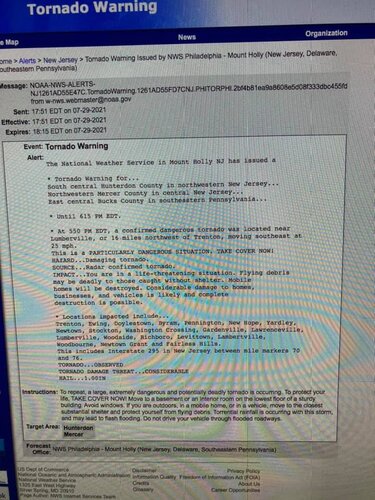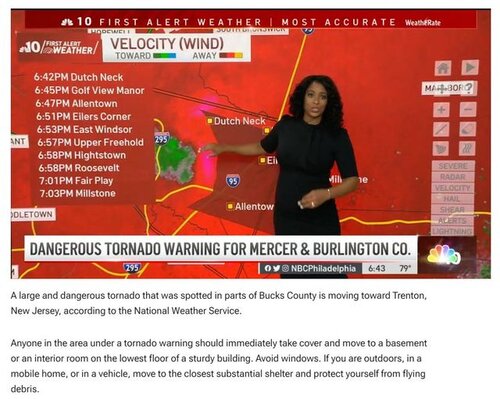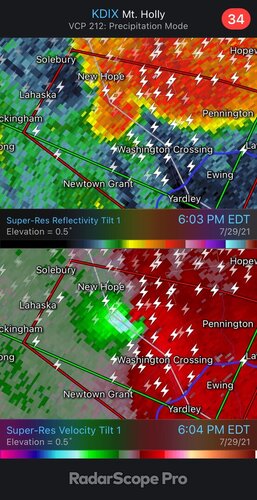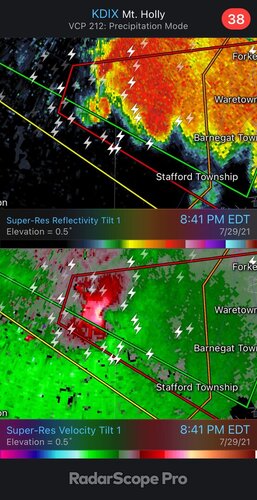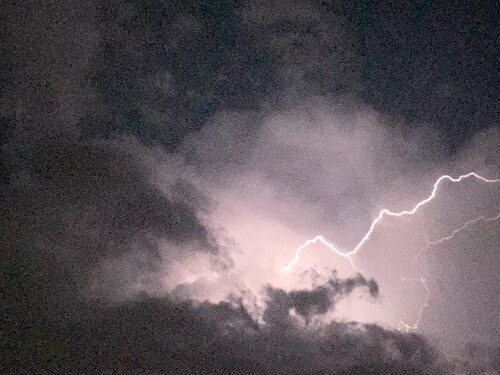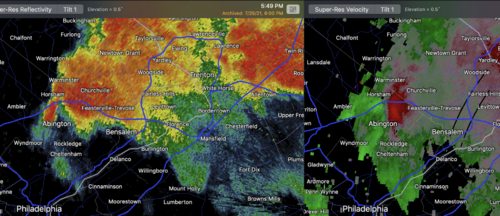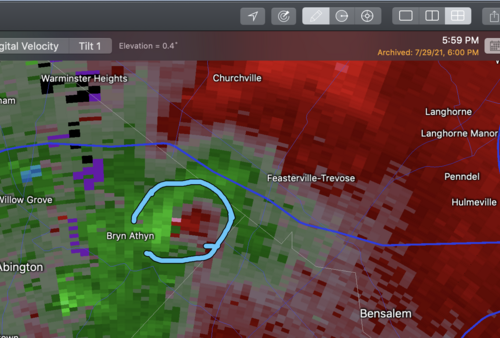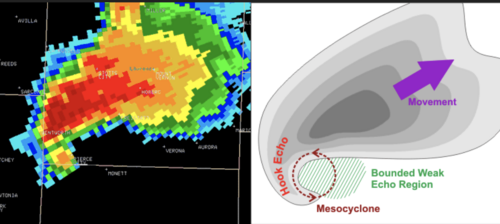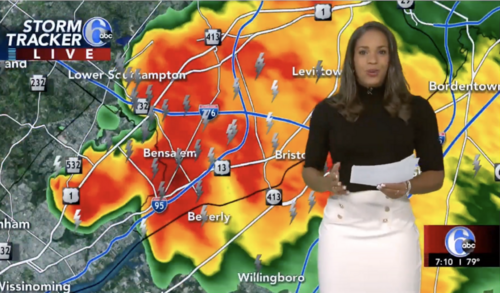Hi John,
Thank you for your comments.
Harold Brooks and Victor Gensini (B&G) say exactly that: the big drop in PoD is related to an attempt to cut false alarms. Please see:
https://www.washingtonpost.com/weather/2021/06/11/improving-tornado-warnings-preparation-nws/
Their hypothesis is that it is worthwhile to have "one unwarned F-3 tornado every three years" in order to decrease the NWS' tornado FAR from 74.2 to 70.4 percent. I rather strongly disagree. My full reply is here:
Friday: Another Dangerous Missed Tornado Warning
The problem is not confined to the reduced PoD. Lead-time has regressed to 1994 levels. The lead time on the Bensalem Tornado was
minus three minutes. That tornado would have been an easy warning, with about ten minutes of lead time, in, say, 2008.
As I note in my reply to B&G,
if they are correct, one person will die each year in order to achieve the imperceptibly small (to the public) decrease in FAR.
This seems like a terrible trade to me. But, it is actually worse. I'm not particularly concerned about EF-0 tornadoes. But, the NWS is missing EF-2's and EF-3's (like Thursday's Bensalem EF-3) at a
far greater rate than Brooks and Gensini predict. That means, inevitably, more will be killed. Given what occurred in Joplin, another catastrophic fatality tornado is in the realm of possibility.
This is why I am hitting this topic so hard.
With the much higher rate of missed significant tornadoes (≥EF-2) than predicted by Brooks and Gensini, it is safe to say the misses are not due to the attempt to decrease false alarms. Something else is at work, but I don't know what it is. I can speculate that some of the factors might be:
- The retirement of my generation of meteorologists and our expertise. This is especially true since we learned to warn tornadoes based on hooks, right-movers and other non-Doppler wind techniques. Given the funnel cloud report at 6:49pm along with the hook (see image) west of Bensalem at 6:47, it would have been an easy warning even without Doppler.
- The hiring of meteorologists fresh out of college. I am aware of multiple instances in three months where the NWS hired meteorologists who graduated in May, even when a more experienced candidate had applied.
- Degradated radar training in the NWS. A person currently in the NWS, when discussing the tornado warning problem said to me, "Twenty years ago, radar training was a month in Kansas City. A decade ago, it was a week in Kansas City. Now, it is a couple of hours from the SOO." I don't know whether this is true everywhere or in all cases. But, if it is largely true, it is a serious issue.
- Lack of attention. A quarter-century ago, the NWS worried about the weather wire and NOAA Weather Radio. Now, there is a tremendous amount of social media that has to be accomplished. Is this drawing attention away from mesoscale analysis and monitoring?
Note: I do not know to the extent any of the above are true. I have heard from people who believe there is no problem at all.
This is why we need a National Disaster Review Board. I explain in detail, here:
Editorial: Renewing My Call For a National Disaster Review Board
The Board would have two responsibilities:
- Like the NTSB, National Chemical Incident Board, and the others, it will comprehensively investigate major disasters to learn what went wrong and what went well. It would not be limited to reviewing the NWS. It would review the NWS, FEMA, Red Cross and other agencies, public and private, just like the other federal boards do. It is a terrible policy for the NWS to investigate itself.
- It will remove warning verification from the NWS. Lots of people, under the promise of confidentiality, send me things. Correctly or not, there are widespread allegations the NWS "fudges" times and other information when they did not have a warning out. On one occasion, a NWS office in Kansas elected not to add a tornado report of mine (even though it was documented with photos) to their database in a situation where they did not have a tornado warning. That gives me a sense those allegations have credibility.
The huge death toll in Joplin -- by far, the worst in the history in the tornado warning era -- was due to mistakes made by the NWS and local emergency management. See:
Amazon.com: "When the Sirens Were Silent" How the Warning System Failed a Community eBook: Smith, Mike: Kindle Store
The NWS's JLN "Service Assessment" was, at best, very poor. Others have called it a "cover-up." But, most meteorologists in and out of the NWS don't know that. As a result, a number of sub-optimal decisions have stemmed from the information in the JLN report.
Before another Joplin, Sandy, or a June 2016 Greenbrier Flash Flood (23 dead) can occur, we
must fix this.
I am a Reagan Conservative and I believe we would be better off if the federal government was smaller. That stipulated,
we must expand the government to create the National Disaster Review Board.
John's comments were appreciated and I would be happy to read any comments or answer any questions you might have. Please, fire away. Thanks, everyone, for reading.
Mike
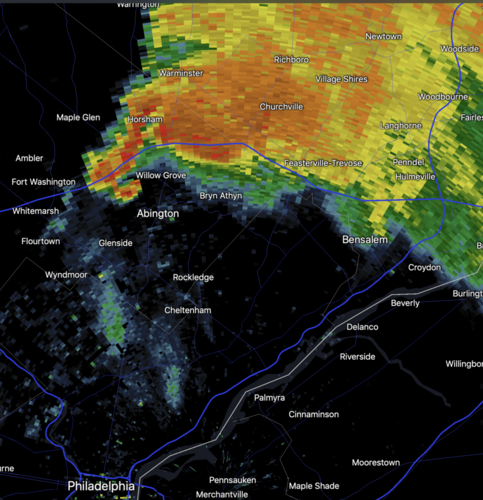
One thing I wonder is whether this trend is related to some effort to reduce the false alarm rate. Certainly seems to me like these storms should have been tornado warned, as you say. I think that reducing the false alarm rate is a worthy goal, but it should not come at the expense of delayed warnings for storms that do produce tornadoes, especially strong ones as in these examples. One could, I suppose, argue that there is an inherent tradeoff, but from the images posted by Mike above, the PA storm seems pretty obvious with regard to tornado potential.

 www.inquirer.com
www.inquirer.com


